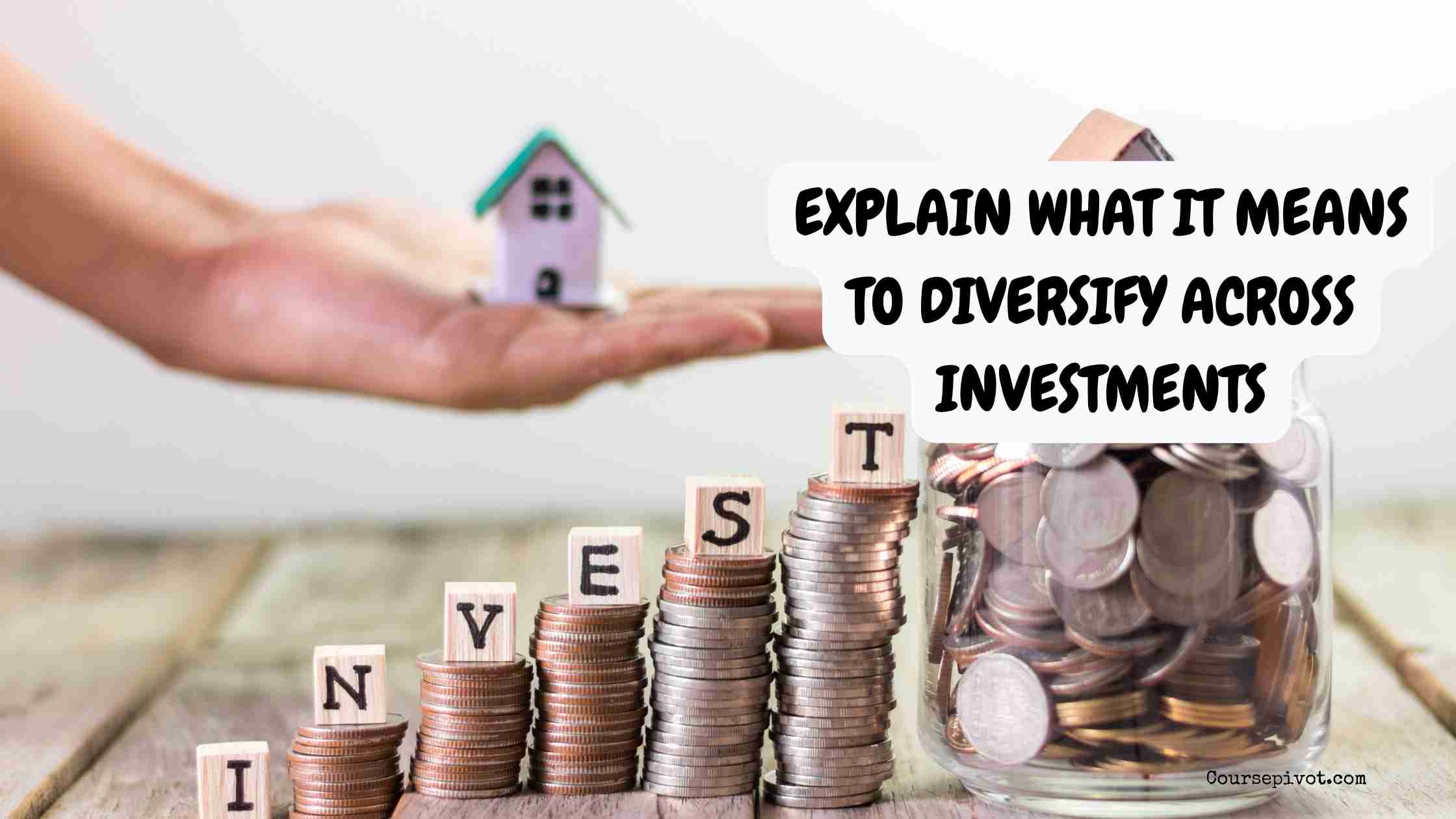
What It Means to Diversify Across Investments
Have you ever heard the phrase, “Don’t put all your eggs in one basket?” That’s the heart of what it means to diversify across investments.
If you’ve been wondering whether diversification is just finance jargon or a strategy that actually matters—let me tell you from experience, it absolutely matters. It’s a practical, tested way to grow your money while managing your risk.
Table of Contents
But what does it really mean to diversify across investments?
Let’s unpack this in a clear, simple, and engaging way.
What Does Diversification Across Investments Mean?
To diversify across investments means putting your money into a variety of financial assets—not just one type—so your portfolio is not overly dependent on the performance of a single investment.
For example:
- Instead of investing everything in stocks, you might also include bonds, real estate, mutual funds, and ETFs.
- You could even go further and diversify within those categories—like owning both tech stocks and healthcare stocks, or both corporate bonds and government bonds.
In simple terms: you spread your money around. Why? Because when one investment suffers, the others might hold steady or even gain, balancing out your returns.
- Read our blog on Explain What It Means to Diversify by Asset Class
Why Is It Important to Diversify Across Investments?
Markets are uncertain. Even the smartest investors can’t predict what will happen tomorrow.
Here’s why diversifying across investments is so essential:
- You reduce your exposure to risk.
If one asset class tanks, others might stay afloat or rise. - You create more stable returns over time.
Diversification smooths out the bumps. Your portfolio won’t ride every wave so wildly. - You position yourself to benefit from different sectors.
One year tech might lead. Another year it could be energy, real estate, or healthcare.
When I first started investing, I poured everything into tech. It worked… until it didn’t. When tech stocks dropped, I lost thousands. Had I spread my investments more widely, I could have protected myself.
Lesson learned.
Examples of How to Diversify Across Investments
Here’s how someone might diversify across investments:
By Asset Type
- Stocks – Growth potential, high risk
- Bonds – Stability and income
- Real Estate – Long-term appreciation and rental income
- Cash/Cash Equivalents – Liquidity and safety
- Commodities – Hedge against inflation
By Sector
Even within stocks, you can diversify:
- Tech
- Healthcare
- Energy
- Financial services
- Consumer goods
By Geography
Invest in:
- U.S. markets
- Emerging markets
- European or Asian economies
By Investment Style
- Growth vs. Value
- Small-cap vs. Large-cap
- Active vs. Passive funds
This way, your portfolio doesn’t rely on just one market, one country, or one type of company to perform.
How to Start Diversifying Across Investments
1️⃣ Set Your Investment Goals
Are you saving for retirement, a home, or building wealth over time? Your goal will shape your strategy.
2️⃣ Know Your Risk Tolerance
Are you okay with short-term losses for long-term gains? Or do you prefer steady, slow growth?
3️⃣ Choose a Mix That Matches You
Balance risky investments (like stocks) with stable ones (like bonds and cash). Include a mix of sectors and global markets.
4️⃣ Revisit and Rebalance
Life changes. Markets shift. Your investment strategy should evolve too. Review it every few months.
Benefits of Diversifying Across Investments
Let’s break this down:
- ✅ Reduced risk of total loss
- ✅ Smoother ride through market ups and downs
- ✅ Exposure to more opportunities
- ✅ Better long-term results
- ✅ More peace of mind
Isn’t that what we’re all looking for? Growth with less stress.
What It Really Means to Diversify Across Investments
Diversifying across investments is about building a safety net for your money.
It’s not about being afraid to take risks—it’s about being smart about those risks.
If your entire portfolio depends on a single investment type, you’re at the mercy of its success—or failure. But when you diversify, you protect yourself. You create balance. You position yourself for success, even in uncertain times.
So when someone asks, “What does it mean to diversify across investments?”
Here’s the answer:
It means spreading your money across multiple, different types of investments so no single event can wipe out your financial progress. It’s a strategy that builds resilience, confidence, and long-term wealth.
And from my own investing journey, I can tell you this—diversification is not just smart, it’s essential.



